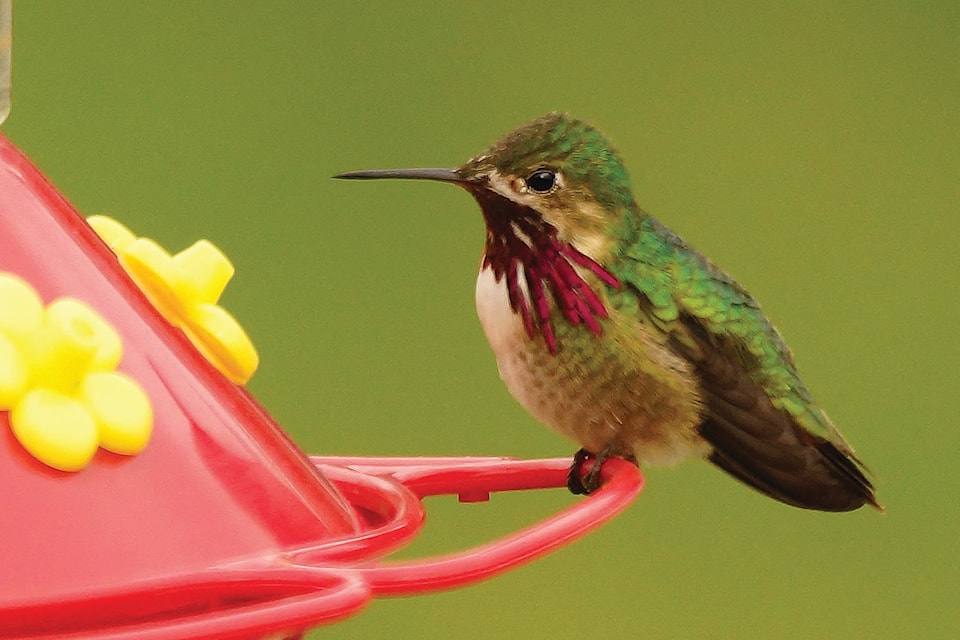Many of us have hummingbird feeders out at this time of year.
Staff at Mountainaire Avian Rescue Society remind people it is essential to keep your feeder free from mould, which proliferates on the feeders.
If a hummingbird ingests this mould, it will damage its internal organs and result in death.
It is therefore incumbent upon those with feedes to ensure that when nectar is put out for the birds, the feeders are kept free from anything that can cause harm.
The folks at MARS Wildlife rescue recommend that feeders be cleaned at least once a week or at any time when the feeder needs refilling.
There are many ways to clean the feeders; soap and hot water can work well, as will baking soda and hot water. To ensure a good deep clean and to get rid of any nasty mould, a good soak in a diluted solution of chlorine bleach will prove effective.
Less toxic alternatives include white vinegar or hydrogen peroxide. Follow this treatment with a good scrub of all parts of the feeders, including the ports, to ensure that no trace of mould remains. Old toothbrushes, baby-bottle brushes and even a well-washed mascara brush may help do the trick, or there are also specific brushes for cleaning hummingbird feeders available.
Follow these steps with a good rinse and to ensure that no debris or cleaning residue remains and then allow the feeder to dry before refilling.
An alternative to feeders is planting some flowers that will attract the birds. Brightly-coloured tubular flowers are particularly attractive to hummingbirds. These include columbines, daylilies, fuchsia and lupines and many common annuals such as impatiens and petunias.
One final note of advice for keeping the hummingbirds safe: don’t put the feeder too near to a window as the birds can and do fly into the glass and injure themselves.
–Submitted by MARS Wildlife Rescue
